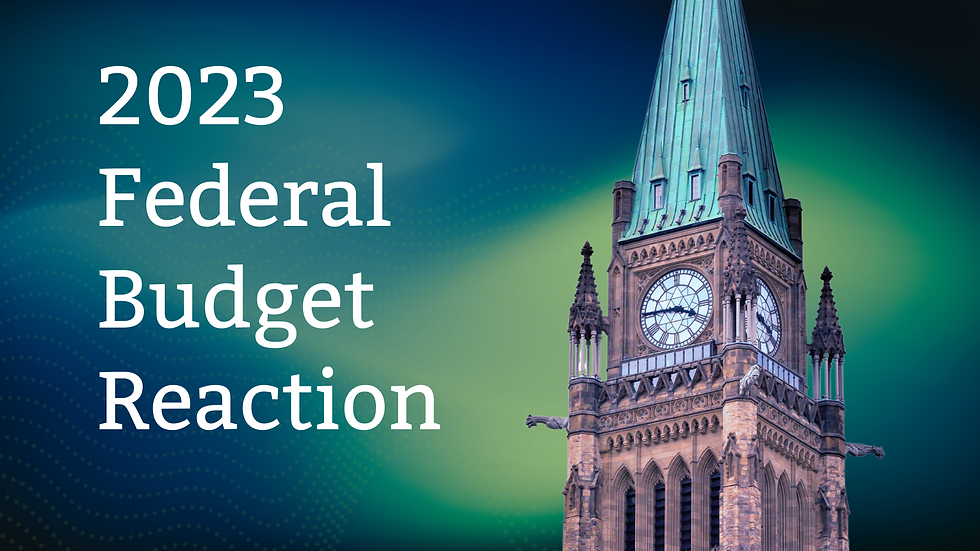Megan Zimmerman & Barend Dronkers: What is Community Energy?
- Megan Zimmerman
- Mar 16, 2016
- 3 min read
Updated: 3 days ago

On February 16th, Calgary Economic Development and the Pembina Institute co-hosted the Alberta Community Energy workshop. More than 80 diverse stakeholders participated, including representatives of academia; rural, municipal and provincial government; industry; utilities; economic development organizations; First Nations groups; NGOs and students. Why? Everyone was keen to understand how Albertans could own a piece of the renewable energy pie as the province starts phasing out coal.
Community owned energy means that a community (First Nation communities, farming community small town/county and even larger distributed projects in major cities like Calgary, Edmonton or Lethbridge) can have influence on the definition, management and execution of a renewable energy project in either wind, solar, geothermal or biomass.
Before brining this workshop together, we wondered: do Albertans even know they can have a personal stake in Alberta’s energy transition? We decided to share this developing story, as well as how any Albertan can participate in community-owned energy, and how they would benefit.
Community-owned energy means that a community – such as a First Nations community, a small town, or even a major city like Calgary, Edmonton or Lethbridge – can have influence on defining, managing and executing a renewable energy project in either wind, solar, geothermal or biomass. These projects are usually created for the purpose of generating electricity.
So why would a community team want to take this on?
Community-owned distributed renewable generation brings considerable benefits to Alberta families, businesses, communities and the economy. It can turn energy infrastructure — otherwise considered a liability — into an asset with financial and social benefit returns. Families can look to renewable energy to complement their household income and strengthen their balance sheets by investing in an energy co-op, a community solar garden or buying shares in a community economic development investment fund.
Communities retain economic benefits as well. Initial investment can return money to the community for re-investment. Renewable energy projects build capacity for further community economic development by retaining capital, training local labour and inspiring entrepreneurship. And because citizens have a direct stake in their energy production they are more likely to gain energy literacy.
On the macro-economic level, community ownership of energy systems can foster long-term social license for renewable energy. Community energy can be an important part of a comprehensive effort to diversify employment opportunities by developing the trades and skills necessary to plan, install and maintain renewable energy systems.
Obviously not all communities have the know-how to develop their own community energy project but there are plenty of ways these business ventures can be structured. Communities can choose between a for-profit and non-profit model. Project leadership can come from a variety of places, including community members, associations, entrepreneurs, local businesses, school boards, municipalities or post-secondary institutions. And like any successful project team, a diverse set of skillsets are required for business planning, such as financial modeling; legal expertise for writing up and negotiating contracts; and marketing to acquire funding, grow membership and encourage community involvement.
Intrigued? There are plenty of resources to check out to feed your curiosity and learn more.
A couple of active Alberta projects
Lubicon Solar — a 20 kW solar energy project that provides clean, affordable power to a small First Nations community. This project not only offers affordable electricity, but an opportunity to train and involve community members in energy literacy education.
Green Acres — the largest solar project in Alberta, 2 MW of installed solar energy capacity with a local Hutterite community.
Town of Devon and Vulcan are both involved in solar projects that are initiated by the municipal (town) governments, but involve a substantial amount of community member consultation and crowd-funding for certain elements of the project.
Town of Banff offers a Feed-in Tariff program, and is researching ways to involve a larger portion of the town’s population in a community energy project format
Outside of Alberta
Samso “Energy” Island — An island with a local population of 4,200 who have pooled together their resources to finance an energy transition with an off-shore wind farm, biomass and solar installations. The island has since established it’s own “Energy Academy” for capacity building, training and show-casing the island’s achievements to the international community.
We encourage all Albertans to understand what choices they have to take an active role in their energy future.
Community-owned renewable energy projects are one way to get involved, learn about energy production and alongside your neighbours. A group of Calgarians have just launched a crowdfunding campaign for the Alberta Solar Co-op – here’s your chance to find out more about community energy ownership from people just like you.




Comments